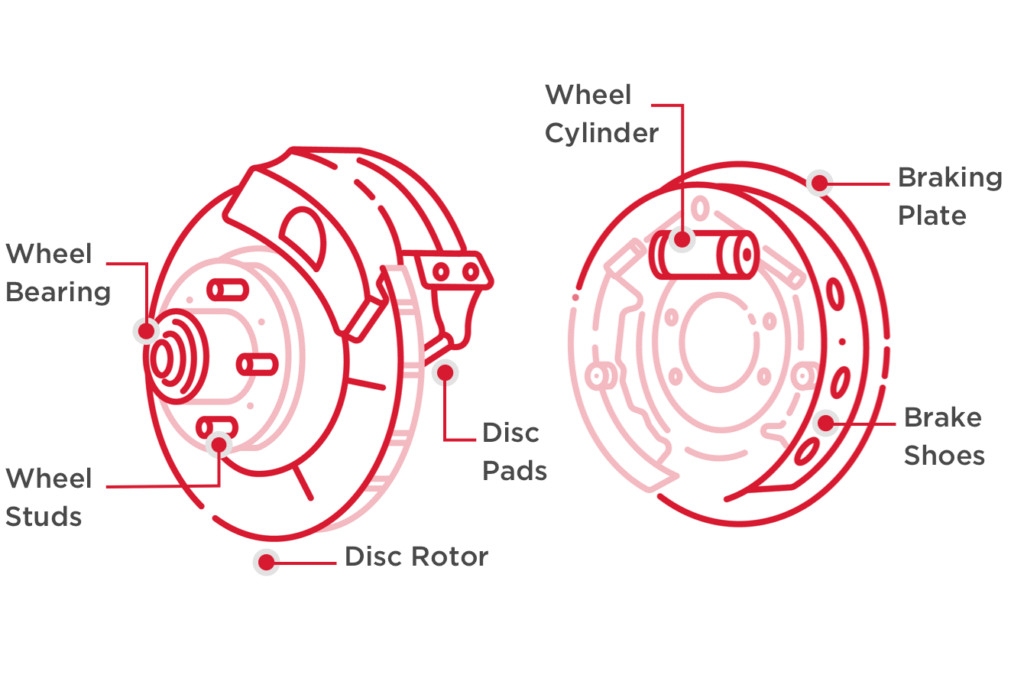
Braking System Fault on Renault: Full Diagnostic, Causes, and Fix Guide

A “Braking System Fault” message on your Renault’s dashboard is not a minor advisory—it’s one of the most serious system warnings your vehicle can display. In this comprehensive guide, we walk through the true meaning of the warning, the likely causes, detailed diagnostic processes, step-by-step repair instructions, and a preventative maintenance plan that ensures the problem doesn’t return.
- Understanding the Renault Braking System Fault Warning
- Most Common Causes of Braking System Fault in Renault Vehicles
- Low Brake Fluid Level
- Contaminated or Old Brake Fluid
- Brake Pad or Rotor Wear
- Brake Fluid Sensor or Pressure Sensor Failure
- Wheel-Speed or ABS Sensor Problems
- Damaged or Corroded Wiring
- Weak or Low-Voltage Battery
- Aggressive Driving or Thermal Stress
- Heavy Loads or Towing
- Caliper, Master Cylinder, or ABS Module Failure
- Step-By-Step Diagnostic Flow for Renault Braking System Fault
- How We Fix the Braking System Fault
- How to Prevent the Braking System Fault Returning
- FAQ: Renault Braking System Fault
- Final Summary
Understanding the Renault Braking System Fault Warning
What the warning actually indicates
When the “Braking System Fault” message appears, the vehicle’s electronic control unit has detected an abnormal reading within the hydraulic circuit, pressure system, or sensor network. This may mean:
- Pressure irregularities in the brake hydraulics
- Low or contaminated brake fluid
- A failing pressure or level sensor
- A weak or unstable electrical supply
- A malfunction within the ABS or wheel-speed monitoring circuits
- A mechanical fault in pads, rotors, calipers, or master cylinder
Why immediate action is essential
This specific warning suggests that braking performance cannot be guaranteed. Potential consequences include:
- Increased stopping distance
- Reduced ABS effectiveness
- Loss of brake pressure under hard braking
- Intermittent braking imbalance
- Activation of “STOP” mode in severe cases
If the light appears, we strongly recommend that you do not continue driving normally until at least the basic checks have been completed.
Most Common Causes of Braking System Fault in Renault Vehicles
Low Brake Fluid Level
This is the number one culprit. Pad wear naturally lowers fluid in the reservoir. Even a small drop below the sensor threshold will trigger the warning.
Contaminated or Old Brake Fluid
Brake fluid absorbs moisture over time. This weakens hydraulic performance and may confuse the pressure sensors.
Brake Pad or Rotor Wear
Worn pads reduce braking efficiency and lower fluid level. Damaged rotors can cause vibration, noise, and braking imbalance—all of which may activate the fault system.
Brake Fluid Sensor or Pressure Sensor Failure
If the brake fluid sensor becomes dirty, corroded, or electrically unstable, the ECU receives incorrect readings and issues a warning.
Wheel-Speed or ABS Sensor Problems
Renault models rely heavily on wheel-speed data for braking calculations. Dirt, corrosion, broken wiring, or a worn bearing can cause faulty readings.
Damaged or Corroded Wiring
Connector corrosion under the bonnet, especially near the battery tray or wheel arches, frequently leads to intermittent braking faults.
You may be interested in reading Renault Captur Boot Space: Complete Dimensions, Practicality & Luggage Capacity Guide
Renault Captur Boot Space: Complete Dimensions, Practicality & Luggage Capacity GuideWeak or Low-Voltage Battery
As many Renault owners have experienced, a weak battery can cause multiple false warnings—including braking system faults—because the ABS and brake modules require stable voltage.
Aggressive Driving or Thermal Stress
Repeated harsh braking or descending steep gradients overheats components and causes wear or fluid aeration.
Heavy Loads or Towing
Additional weight increases brake demand, amplifies hydraulic pressure, and accelerates wear.
Caliper, Master Cylinder, or ABS Module Failure
Less common but more serious. Internal leaks and failing solenoids can create pressure loss or inconsistent response patterns.
Step-By-Step Diagnostic Flow for Renault Braking System Fault
To eliminate guesswork, we follow a structured diagnostic path that identifies the cause efficiently.
Stage 1: Quick Checks
- Inspect brake fluid level (must be between MIN and MAX).
- Check brake fluid colour; dark or cloudy fluid indicates contamination.
- Test battery voltage (ideally 12.4–12.7V engine off).
- Inspect battery terminals and grounds.
Stage 2: Electronic Diagnostics
Use an OBD-II scanner capable of reading ABS and brake module data. Look for:
- ABS sensor faults
- Pressure sensor irregularities
- ECU communication errors
- Brake switch faults
Intermittent codes here strongly indicate sensor or electrical issues.
Stage 3: Physical Brake Inspection
We inspect:
- Pad thickness
- Rotor condition (scoring, rust, warping)
- Caliper piston movement
- Leaks along hoses and lines
- Wheel sensors for dirt, rust, or cracked wiring
Stage 4: Hydraulic System Analysis
If pressure inconsistencies are detected:
- Perform a system bleed
- Replace brake fluid
- Inspect master cylinder
- Check ABS pump or modulator
Stage 5: Road Testing
After repairs, the vehicle is test-driven:
You may be interested in reading Renault Captur Boot Space: Complete Dimensions, Practicality & Luggage Capacity Guide
Renault Captur Boot Space: Complete Dimensions, Practicality & Luggage Capacity Guide Renault Captur Handbrake Adjustment
Renault Captur Handbrake Adjustment- Light braking
- Hard braking
- Low-speed ABS activation
- Emergency stop simulation
The warning should not return under any of these conditions.
How We Fix the Braking System Fault
Below are the exact repair procedures we apply depending on the diagnosed problem.
Brake Fluid Service
- Replace old or moisture-contaminated fluid
- Bleed system to remove air
- Ensure reservoir cap vent and sensor are clean
- Top up only with Renault-approved fluid
- Replace battery older than 3–4 years
- Clean and secure terminals
- Check ground straps and body-to-engine earth points
- Clear fault code and retest
Wheel-Speed or ABS Sensor Repair
- Clean sensors and tone rings
- Replace any faulty or highly corroded sensors
- Repair broken wiring or loose connectors
- Re-scan after installation
Brake Pad and Rotor Replacement
- Replace pads before minimum thickness
- Replace rotors if warped, deeply scored, or rust-damaged
- Lubricate caliper sliders
- Reset the brake system and test
Hydraulic Component Repair
If faults persist:
- Inspect master cylinder for internal leakage
- Test ABS pump solenoids
- Consider replacing the ABS modulator if hydraulic pressure is inconsistent
How to Prevent the Braking System Fault Returning
We implement a preventative plan built around real-world Renault conditions:
Maintenance schedule
- Every 12 months: inspect pads, rotors, fluid, wheel sensors
- Every 24 months: full brake fluid replacement
- After winter or muddy conditions: clean wheel sensors
- After heavy loads or towing: re-inspect pads/rotors early
Driving habits
- Avoid unnecessary hard braking
- Maintain safe following distance
- Downshift early on steep descents to reduce brake load
Component selection
- Use high-quality pads, rotors, and sensors
- Avoid budget electronics that can produce inconsistent readings
FAQ: Renault Braking System Fault
Can I drive with the “Braking System Fault” message?
We do not recommend driving normally. Braking performance may be compromised.
Is this problem usually electrical, mechanical, or hydraulic?
Most cases originate from low brake fluid, pad wear, wheel-speed sensors, or a weak battery.
Can I fix the issue myself?
Yes, if you are familiar with basic vehicle maintenance—fluid checks, battery service, and sensor cleaning. More complex cases require professional diagnostics.
What is the most common cause?
Low brake fluid or a worn pad set is by far the most common cause, followed by faulty ABS sensors.
What should I do first?
Check the brake fluid level and battery voltage immediately.
Final Summary
The “Braking System Fault” warning on a Renault is a critical indicator that something within the braking system has drifted out of its safe operating range. By following a methodical diagnostic approach, inspecting fluid levels, battery voltage, sensors, wiring, pads, and hydraulic parts, you can quickly isolate the issue and apply the correct fix. With proper maintenance and careful driving habits, you can prevent the warning from returning and ensure the braking system continues to operate at peak safety and reliability.
You may be interested in reading Renault Captur Boot Space: Complete Dimensions, Practicality & Luggage Capacity Guide
Renault Captur Boot Space: Complete Dimensions, Practicality & Luggage Capacity Guide Renault Captur Handbrake Adjustment
Renault Captur Handbrake Adjustment Renault Captur Towing Capacity: The Complete UK Guide (Braked & Unbraked Weights for Every Engine and Trim)
Renault Captur Towing Capacity: The Complete UK Guide (Braked & Unbraked Weights for Every Engine and Trim)If you want to know other articles similar to Braking System Fault on Renault: Full Diagnostic, Causes, and Fix Guide you can visit the category Service and Parts.
Deja una respuesta




More content of your interest